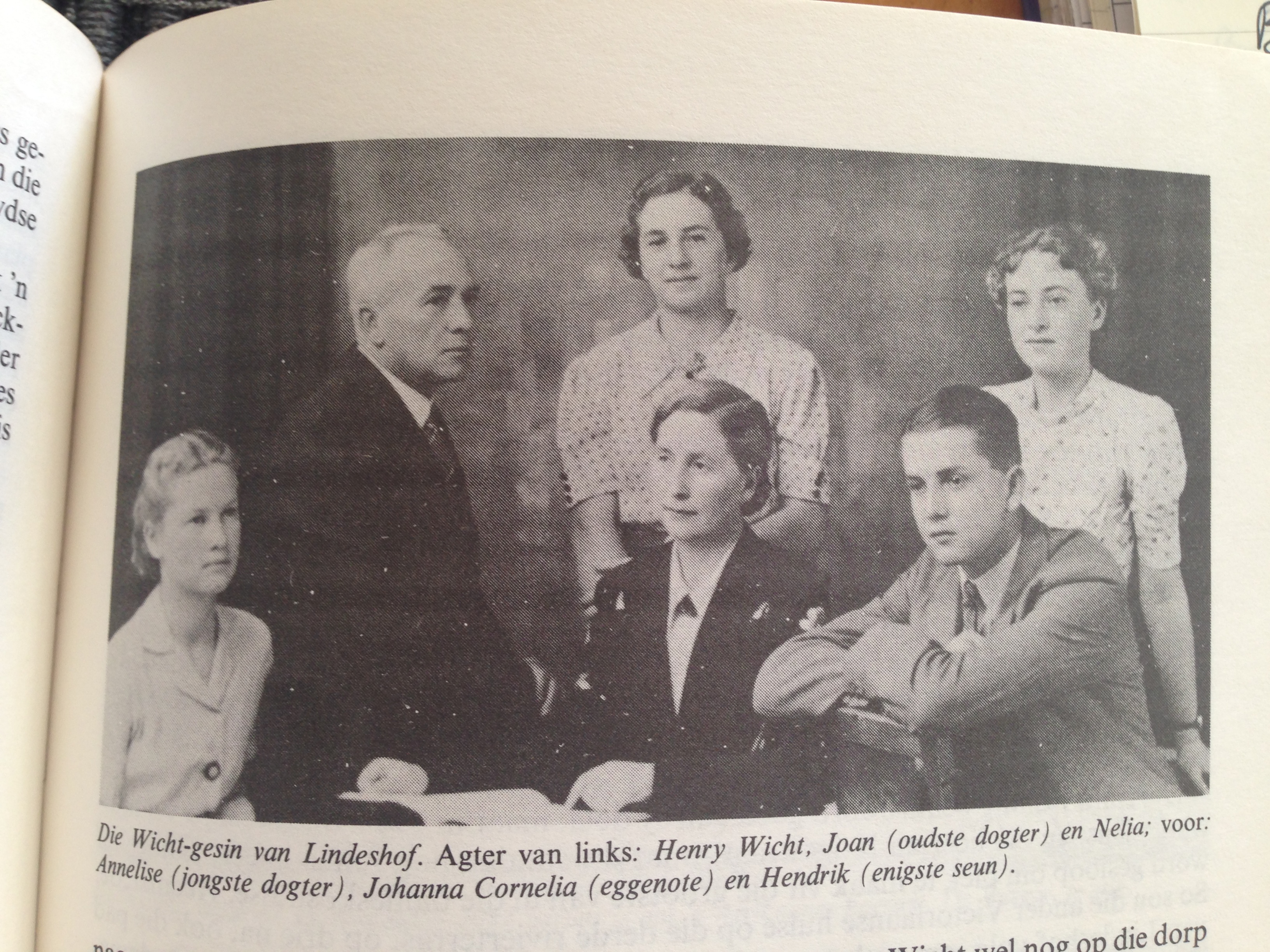The story of this somewhat obscure little street is interesting because it tells us about the people who lived in Van Riebeeck Street before it was used for residences like Heemstede and Metanoia.
Interestingly, this story also slots into a larger narrative, that of the Second World War.
Henry Wicht was originally a dairy farmer on Lanzerac. He would have inherited the dairy from his father, but the Wicht family wanted to move closer to town (Today Lanzerac feels close to town, but most people in those days didn't own motor cars.)
The family bought a house in Van Riebeeck Street in 1921, known as Lindeshof, the house of Jan Linde Beyers. Henry Wicht and his wife Jo (born Claassens) had three daughters and a son. The Wicht family kept a cow in the yard, and as Henry's wife Jo was an exceptional tennis player, they had a tennis court. Jo is thought to be the town's first female motorcar driver.

With the outbreak of the war, explains the writer Annie Hofmeyr, the whole Wicht family signed up. Their involvement was surely controversial, as the conflicting interests of Afrikaans and English-speaking people caused much tension at the time. It is believed that in South Africa more than 24 075 women took part in the war as full-time volunteers. Henry was promoted to colonel.
Fortunately everyone came home unharmed and the family could resume their normal life. Henry Wicht became an important figure in the town's 'eksekuteurskamer' as well as a well-known auctioneer.
The Wicht's decided to name the little cul-de-sac behind their house after Jo's parents, Mr and Mrs J.H. Claassen. Today Claassen street is a campus road leading on one side to residences like Heemstede and Metanoia, and on the opposite end to the Skuilhoek parking area. The house itself was demolished when Heemstede was built.
Two famous figures that lived in Van Riebeeckstraat were Paul Roos and G.G. Cillié.
